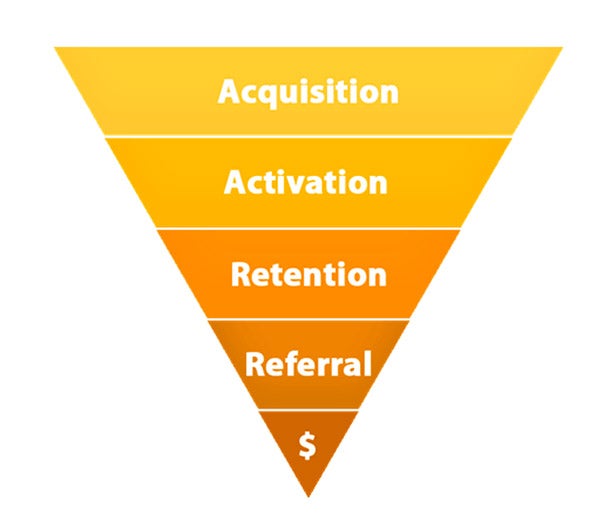The Marketer's Guide to Transactional Email A look at the lifecycle of a user and find opportunities to enhance their experience using email.
By Alex Mohr
This story originally appeared on KISSmetrics
As a great appreciator of finely crafted email newsletters, it hurts that I have to caution so strongly against their use. But the (very few) marketers who actually are sending high-end newsletters know more than anyone that newsletters, as a general rule, don't convert well.
If successful marketers thought newsletters were just a cheap and easy way to re-engage users, they wouldn't spend so much time making them great. They know the bias they are overcoming (being perceived as a marketing channel), and they develop an identity partially based on the value they provide in the newsletter, such as Hiten Shah in his SaaS Weekly.
So, instead of talking about the incredible amount of effort necessary to make a newsletter great, today we're going to take another tack. We'll look at the lifecycle of a user and find opportunities to enhance their experience using email.
For the sake of organization, we're going to use Dave McClure's "Pirate Metrics" model as a frame to guide us through the customer lifecycle and talk about how to get the most out of the emails you're probably already sending.
Pirate Metrics works very well here because (a) it gives us discrete, measurable points to take stock, and (b) it can be explained in about 5 minutes. Here's the gist:
- Acquisition – You, through whatever sorcery at your disposal, convince someone to show up on your site.
- Activation - Your new visitor signals their interest in your product by making an attempt to use it. This could be a free trial signup, account creation, or any number of things, depending on your business.
- Retention – The activated user sticks around long enough to experience the value of what you provide and is ready to take it to the next level. This might mean integrating your tool, making API calls, or adding something to their shopping cart.
- Referral – The user so enjoys their experience that they recommend you to a friend, either directly or just through being publicly engaged with your brand.
- Revenue - Users benefit from your site, and you make money.

Acquisition – The Welcome Email
The first thing you send someone after they make the potentially regrettable decision to give you their email address sets the tone for what they should expect. It's also more likely to be opened than any emails you send thereafter. A study by Experian put the difference at a factor of 4-5x, and our own internal data review has shown a similar trend.
There are two extremely common mistakes that people make when crafting welcome emails:
- Letting the opportunity go to waste. Writing the welcome email was just a checkmark on someone's calendar one day, and no one has gone back since to make it better.
- Focusing too heavily on downstream conversions. This new user is barely that. A few minutes ago, they were a "visitor." This is the time to reaffirm the value they saw in you in the first place, not the time to cash in on it.
Here's a great example from Nice Laundry:

There are a couple of things going on here that I love:
- Instantly Obvious Value – Free shipping. It's there in all caps. Free socks. What more could you want from a company that ships you socks?
- Consistent Flow – From this view, you are one click away from shopping for socks, complete with the knowledge that, if you find something you like, you get free shipping and some bonus socks.
Activation – Onboarding Emails
So, your new user has landed on your site, opted-in to hearing from you, and you have rewarded them for that decision by providing immediate value in your first communiques. I know it feels like the next step should be to attempt to extract some of that value back, but a better way to think about it is to start with this question:
What do I already know about this person?
Click to Enlarge+

Did they open your welcome email? Did they take your walk-through all the way to the end? How far have they made it toward the next step on their own? This knowledge, combined with your experience supporting existing users, should inform what kind of email path you'll be sending them down.
By taking this approach, even if you don't have a website, you can do better than just setting up a drip campaign for all new subscribers. Use what you know about your relationship.
Here's a great example from Zapier:

It takes a simple bit of information – you haven't used this product you signed up for – and it tries to short circuit the falling out process by providing a direct line to the CEO. While it may not scale infinitely, in an early startup, this is huge.
Rob Fitzpatrick, the founder of Dex.io, once wrote that it's the CEO's job to email the first 1000 customers, and I think that's a great way to live. The direction of your company and the content of your communications should all be informed by direct interactions with your users: What problems do they have understanding or taking advantage of your full value? What gets them the most excited? What would make them feel special?
Retention – Don't Start a Drip Campaign (Yet)
Once you have an activated user, the real fun begins. You've gotten past the awkward getting-to-know-you stage, and both parties are satisfied they're not making a huge mistake. Now, you can start to ease into a more casual, conversational tone. Of course, this comes with the risk of crossing the line from casual to complacent.
This is where generalized advice is really tough. The simple fact is you have to work out a lot of this with your users. But, if you take only one thing away from this guide, let it be this:
Don't start a newsletter.
Some products, especially sites that are very content-driven, like Quora, can get away with a regular digest because it reaffirms the value you saw when you signed up.

Because the interests of Quora's user base are pretty centralized, they can get away with blasting out some of the top content of the last week or so. They also have the advantage of asking very little of their users. An ecommerce business sending emails with the same frequency would come off like one of those pushy mall kiosk attendants.
If you don't have a huge stable of great user-generated content, you might have to get a bit creative to engage existing users. This is the heart of a good transactional email strategy. Think about what kinds of emails you send users as part of their normal flow. Which of those get them the most excited?
Alex Schultz, VP of Growth at Facebook, shared their metric for activation in a recent talk – 15 friends. Once a user adds 15 friends, they likely will become a lifelong user. Think about it. When was the last time you got an email from Facebook telling you someone confirmed your friendship? Once you're a functional, activated user, those kinds of things move to in-app notifications.
The real trick in user retention is figuring out how often your users want to hear from you. You don't want them to forget about you, but you really don't want to come on too strong. Unsubscribes can be extremely detrimental to your future deliverability! So, in the immortal words of Han Solo:

And, if all of that fails, there's always the Hail Mary email, which is also called the win-back email. If done tastefully, it can be a great resource in the process of re-engaging users who have simply forgotten about you. There's no shame in your game, just be tasteful about it and don't take yourself too seriously.

Referral – Finding the Power Users
It's really easy to think of a user referral as one customer tweeting a tagged URL and getting some sort of bonus for anyone who joins from that link. And, while that is one kind of referral, it's fairly limited to consumer products, so we'll take a look at that when we get to receipt emails.
I like to think of this stage of the customer lifecycle as a time when you leverage a user's satisfaction to improve everyone else's experience. The original Pirate Metrics model puts this as second-to-last in the funnel timeline, but, in truth, you should be working toward referrals at every stage.
To that end, it's a great idea to have a segment of power users you can reach out to when you want feedback, beta testers, or case studies for your product. If you don't have such a group, don't worry, just ask. Many of them will readily self-identify.
A great way to pull this off is with a simple survey. Here's a quick tutorial on hacking together a survey based on the Net Promoter® Score methodology. And, here's an example of exactly that methodology in the wild from Dollar Shave Club:

Revenue – Receipts and Lifetime Value
As marketers, we like to spend a lot of time talking about the ROI of different marketing investments, but one thing that can get lost in the shuffle is actually improving the lifetime value of each of our new users.
A good receipt email is like the end of a golf swing. The ball's path has already been determined, but without the follow-through, you still don't have a good swing. Here's a great receipt from Uber:

There are a couple things I love about this email. For one thing, the styling is very consistent with the rest of my Uber experience. However (quite unexpectedly), I find that the best part is actually the map of my trip, and not just because I am personally a bit of a cartography geek. I also really appreciate the transparency. Uber took this opportunity to accentuate the reasons they are better than traditional cab services.
The really unique thing about sending a receipt is that your user has just made a purchase. This is the most engaged they will ever be, so take the opportunity to really drive it home. Think of one piece of information they wouldn't expect in a regular receipt, and add it to your email.
Conclusion
So, newsletters are great, and I don't doubt that you can craft a terrific one. But, the truly wonderful businesses that people want to interact with and talk about are the ones that put effort and soul into every conversation, not just those they're using to try to sell you something.
Just like you want every post in your blog to sound right and every landing page on your site to be clear, concise, and consistent, you also should mind the style and performance of your transactional emails. Your relationship with your users is just like a real human relationship. The grand gestures every once in a while are nice, but they won't save a lack of attention to the everyday details.










